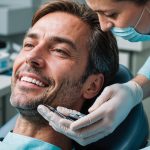Overview of Laser Therapy in Acne Treatment
Laser therapy has revolutionised the field of acne treatment innovations, offering hope for individuals with persistent skin issues. Initially developed as a means to tackle chronic skin conditions, laser therapy has evolved significantly since its inception. In the early days, these treatments were less precise and often accompanied by noticeable discomfort or extended recovery times. However, technological advancements have enhanced the efficacy and user experience of laser therapies.
Modern laser dermatology leverages cutting-edge equipment to target acne with greater precision, minimising side effects. The evolution in technology has given rise to various types of lasers tailored to specific acne types and skin sensitivities. These include fractional lasers, pulsed dye lasers, and diode lasers, each specialising in different aspects of acne treatment, such as reducing inflammation or targeting bacteria.
Additional reading : Unlocking Flexibility: How Modified Yoga Poses Can Alleviate Pain in Rheumatoid Arthritis Sufferers
Today, laser treatments are a prevalent option in skincare, favoured for their efficiency and minimal invasiveness. Clinics and dermatology centres widely offer these solutions, making access relatively simple for those battling chronic acne. As the technology continues to progress, laser therapies are likely to become even more refined, thus solidifying their position as effective chronic acne solutions in modern dermatology.
Innovations in Laser Technology for Acne
As technology progresses, laser technology advancements offer promising solutions for acne management. These innovations represent a significant shift from traditional treatment methods, offering a more targeted approach.
Also to see : Unlocking Potential: Do Targeted Breathing Exercises Enhance Lung Capacity in Cystic Fibrosis Patients?
Types of Lasers Used
A variety of lasers are employed to treat chronic acne, each tailored to specific skin types and conditions:
- Nd:YAG lasers penetrate deeply to treat inflamed acne and reduce scarring.
- CO2 lasers excel in resurfacing skin and reducing the appearance of acne scars.
- Diode lasers target sebaceous glands, combating acne by decreasing oil production.
Comparison of Technologies
Acne management innovations highlight the superiority of new laser treatments over older methods. For instance, while chemical peels may irritate the skin, modern lasers offer precision, minimizing side effects. Recent laser technology advancements like fractional lasers ensure minimal downtime and improved skin texture.
Mechanisms of Action
Lasers operate by emitting light energy absorbed by specific skin cells. This energy transforms into heat, effectively destroying acne-causing bacteria and reducing inflammation. Additionally, lasers stimulate collagen production, aiding in skin repair and scar reduction. These mechanisms illustrate how acne management innovations target acne at a cellular level, offering more effective treatment solutions.
Effectiveness of Revolutionary Laser Therapies
The effectiveness of laser therapy has been a hot topic, with numerous research studies offering insights into its real-world impact. Clinical trials highlight its promise, showcasing improved outcomes across various conditions. For instance, in dermatology, laser interventions have been pivotal in treating acne scars and pigmentation issues. Detailed case studies, such as those involving burn scars, illustrate significant patient transformations, underscoring the therapy’s utility.
Clinical evidence supports that laser treatments often provide quicker recovery times and reduced side effects compared to traditional methods. Metrics like patient satisfaction, healing time reduction, and recurrence rates are pivotal in evaluating treatment efficacy. In cases of chronic pain management, studies have demonstrated substantial relief, a testament to laser therapy’s potential.
Understanding these patient outcomes is crucial. In macular degeneration, laser therapy has shown potential in halting disease progression, exemplified by improved vision scores in patients. Additionally, the multifaceted metrics for evaluating treatment efficacy, including cost-benefit analyses and longitudinal studies, reinforce the substantial benefits.
Ultimately, these therapies represent a significant step forward, combining robust scientific backing with compelling anecdotal evidence. As such, laser therapies continue to gain traction as a reliable treatment modality.
Expert Opinions on Laser Therapy
Understanding laser therapy from the perspective of experts can significantly benefit those considering this treatment. Their insights provide clarity on the effectiveness and application in dermatological settings.
Interviews with Dermatologists
Dermatologists emphasise the personalised nature of laser treatments. A common insight shared by clinical experts is that treatment plans should be tailored to individual skin types and acne severity. Through interviews, dermatologists recommend starting with a thorough skin analysis to determine the most suitable laser therapy. This ensures that the treatment’s effectiveness is maximised, addressing specific skin concerns without unnecessary risks.
Guidelines for Treatment Selection
Dermatologist recommendations often highlight the importance of patient education about the various laser options. Experts advise patients to consult with certified dermatologists to gain a clear understanding of potential outcomes and limitations. This expert-driven approach ensures that patients are informed, improving the likelihood of successful therapy results.
Emerging Perspectives
The future of laser therapy in dermatology suggests an increase in its precision and efficacy. Clinical expert analysis indicates ongoing advancements in technology that promise more refined and targeted treatments. Insights from leading dermatologists reveal a growing interest in hybrid treatments that combine lasers with other acne therapies to optimise results. Looking forward, experts believe lasers will play a pivotal role in comprehensive acne management.
Patient Experiences and Testimonials
Understanding the real-world impact of laser therapy on patients can provide invaluable insights. Patient feedback frequently reveals the nuanced experiences of those who have undergone treatment. Many individuals have shared both the physical and emotional aspects associated with acne therapy reviews.
For some, the transformation is profound, boosting their confidence and improving social interactions. These treatment experiences often highlight not just the effectiveness of the treatment but also the emotional relief that accompanies clearer skin.
Several common themes emerge from these testimonials. Many patients discuss the relief from psychological distress and self-consciousness caused by acne. Individuals from diverse backgrounds report varying levels of success, but a significant number observe noticeable improvements in their skin’s condition.
Some patients experience temporary discomfort or side effects, yet they often emphasise that the benefits outweigh these minor inconveniences. The emotional impact, through gains in self-esteem and comfort in social scenarios, is frequently noted.
Overall, patient stories collectively paint a picture of laser therapy as a beneficial intervention for many, offering hope and practical solutions for those struggling with acne. Testimonials serve as a testament to the therapy’s potential benefits and the diverse experiences are integral in shaping new patients’ expectations.
Risks and Side Effects of Laser Treatment
Laser therapy, known for its effectiveness and precision, carries certain risks and side effects. Patient safety is a paramount concern. Understanding these risks helps in making informed decisions.
Common Side Effects
Patients may experience mild side effects following laser treatment. These typically include redness, swelling, or slight discomfort at the treated area. Such reactions are common and generally resolve within a few days. Additionally, some individuals might notice temporary changes in skin pigmentation. Utilising proper aftercare can mitigate these effects.
Long-term Considerations
Long-term outcomes of laser therapy should be carefully weighed. Although rare, there is a potential risk of scarring or permanent pigment changes. Comparatively, these risks are often less severe than complications arising from traditional acne treatments like oral medications. Always discuss these possibilities with a healthcare professional.
Recommendations for Risk Management
Expert guidance suggests the following measures to ensure patient safety:
- Select experienced practitioners to minimize undue risks.
- Undergo a thorough pre-treatment evaluation to assess skin type and medical history.
- Follow all post-treatment care instructions diligently.
Being informed and proactive in managing potential risks can enhance treatment outcomes and patient satisfaction. As with any medical procedure, understanding the balance between risks and benefits is essential.
Comparison with Other Acne Treatment Options
Navigating the world of acne treatments can be overwhelming, given the multitude of options available. The acne treatment comparisons often revolve around traditional methods such as topical creams and oral medications, versus advanced solutions like laser therapy. Traditional treatments have long been the go-to; they involve benzoyl peroxide, salicylic acid, and retinoids, which work by reducing inflammation and bacteria, although they often require prolonged use and may lead to side effects.
In recent years, laser therapy has become a compelling alternative. It’s praised for its ability to target the root causes of acne directly. Unlike medications, laser treatments focus on reducing sebaceous oil production, a common contributor to acne outbreaks, thus offering a solution with fewer systemic side effects.
However, exploring treatment alternatives like blue-light therapy or chemical peels is also worthwhile. While not as popular as laser treatments, these alternatives can effectively complement traditional methods, providing additional layers of acne management.
Selecting the right treatment depends largely on the individual’s skin type, acne severity, and desired outcomes. Whether opting for traditional vs laser treatments, understanding the pros and cons of each can help make a more informed decision.
Conclusion
The future of acne treatment is evolving rapidly with promising developments. Among these, laser therapy developments have been a significant breakthrough, offering targeted solutions that reduce inflammation and bacteria, thereby diminishing acne effectively. With continuous skincare innovations, laser therapy is becoming more advanced and accessible, marking a shift in how we address acne.
Predictions for the future treatments of acne suggest that technologies will become even more precise and tailored to individual skin types. This personalized approach is expected to significantly improve outcomes, minimizing side effects and enhancing patient satisfaction. Moreover, integration with artificial intelligence could further refine treatment plans by analyzing skin patterns and predicting the most effective therapies.
However, the importance of ongoing patient education and research cannot be overstated. As new therapies emerge, both patients and practitioners must stay informed about the latest advances and understand their implications. Continuous research will ensure that new skincare innovations are both safe and effective.
In conclusion, the landscape of acne treatment is set to change dramatically, promising enhanced efficacy and comfort. The future holds exciting possibilities for those seeking clearer skin, supported by cutting-edge technologies and informed professional guidance.











